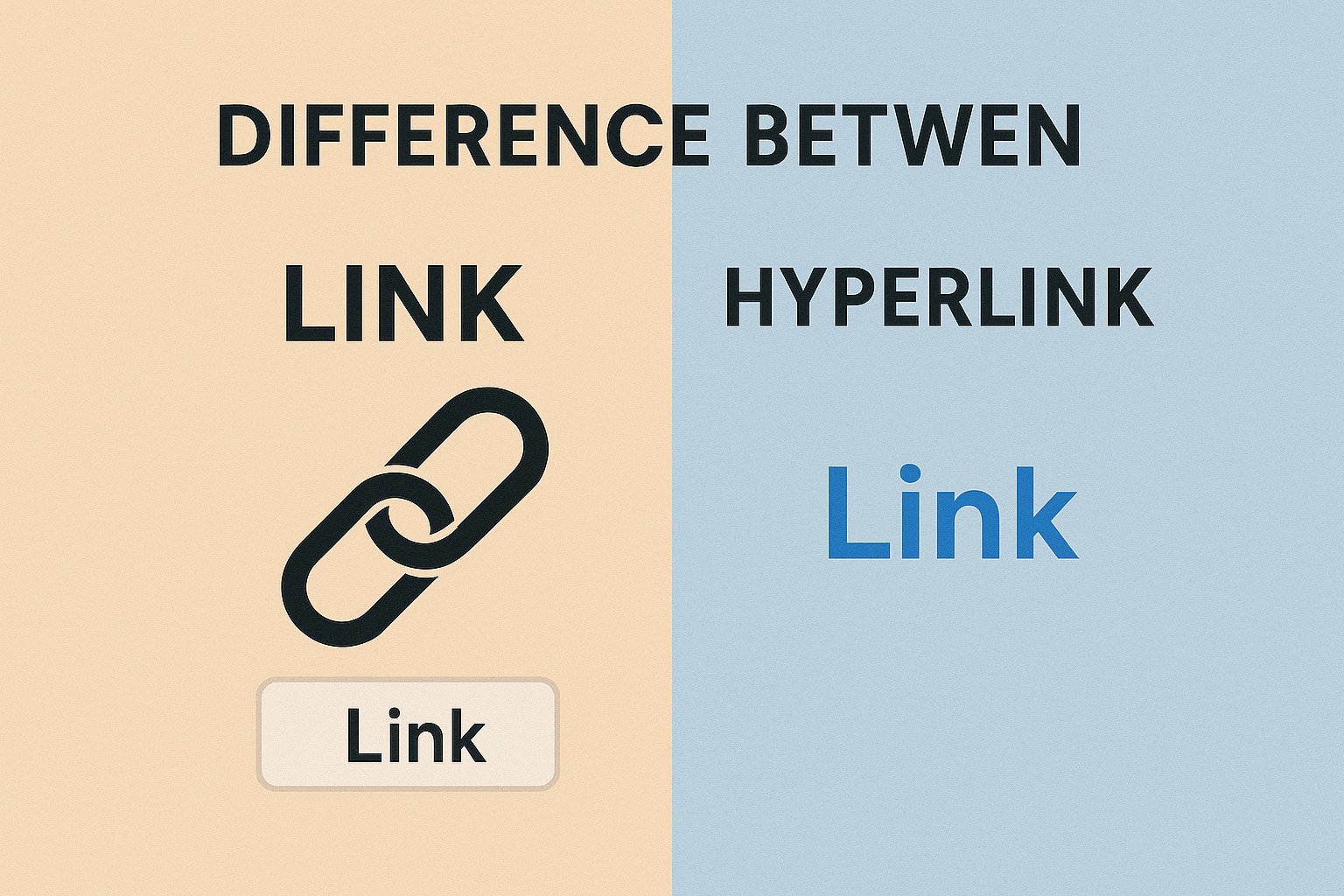
When building a website or web page, understanding the difference between link and hyperlink in HTML is essential. While these terms are often used interchangeably, there are subtle differences in their technical implementation. A link generally refers to the concept of navigating from one location to another, while a hyperlink is a specific HTML element used to achieve this navigation. Understanding how these elements work is crucial for developers and content creators who want to optimize user experience and website functionality.
In HTML, links and hyperlinks are used to guide users through various web pages, websites, or external resources. This difference between link and hyperlink becomes more apparent when analyzing their usage in code. In its simplest form, a link represents the idea of a destination to be reached, whereas a hyperlink refers to the actual HTML element, the anchor tag <a>, that users interact with to navigate. The confusion often arises because the term “link” is colloquially used to describe the hyperlink itself, but their definitions differ within the technical context.
Understanding the Difference Between Link and Hyperlink in HTML
The difference between link and hyperlink becomes most evident when examining how they function within HTML. A link is essentially a destination that can be reached. In theory, a link may represent anything that can be connected, such as an image, text, or even a button. Links can be seen as placeholders, symbols, or references to destinations.
On the other hand, a hyperlink is a formalized HTML element that makes a link functional on a webpage. This element is represented by the <a> tag in HTML, which wraps around the link text or object. The <a> tag attributes, such as href (hyperlink reference), define where the link will lead the user upon interaction. Thus, the hyperlink is not just an idea or placeholder but an actionable, coded component that, when clicked, allows users to navigate to another page or resource.
Moreover, hyperlinks can contain other attributes that define the interaction more specifically. For example, the target attribute in a hyperlink determines whether the linked content opens in the same window or a new one. This ability to control user navigation and interaction makes hyperlinks a critical part of web development, especially for enhancing the user experience.
Why the Link and Hyperlink Distinction Matters in Web Development
The distinction between a link and a hyperlink plays a significant role in web development, especially when optimizing the design and functionality of a website. While the term “link” can be used in casual conversation to refer to a navigation option on a webpage, understanding it technically as a mere destination allows developers to build more flexible and versatile websites.
On the other hand, the use of the term “hyperlink” specifically describes the coding structure that enables this navigation. Without the <a> tag and its associated attributes, the concept of a “link” would remain purely abstract and not function within the confines of a web page. Therefore, mastering the distinction between link and hyperlink helps ensure that developers can properly implement these elements and optimize their websites for both user navigation and SEO (search engine optimization) performance.
Key Differences in Usage
One of the core differences between a link and a hyperlink lies in their usage. A link typically refers to the entire concept of clickable navigation. It’s more of a functional term. In contrast, a hyperlink in HTML is a concrete implementation that directs the user to another web page or external resource. Web developers must understand these terms to avoid confusion and use them accurately when developing websites or discussing web architecture.
Hyperlinks in HTML are generally more flexible than traditional links. For instance, the rel attribute allows developers to define the relationship between the linked document and the current document. This attribute can be crucial for SEO, helping search engines understand how different pages on the web are connected and relevant to each other.
The Practical Implications of Understanding Links vs. Hyperlinks
In practice, understanding the difference between link and a hyperlink is necessary for creating websites that are both user-friendly and functional. When crafting web pages, a properly implemented hyperlink with the right attributes ensures a smooth and efficient user experience. Using hyperlinks correctly can help maintain site performance, increase accessibility, and prevent errors such as broken links.
Moreover, from an SEO perspective, correctly implemented hyperlinks are important. Search engines use hyperlinks to crawl the web and index content. Therefore, ensuring that the right tags are used when creating links will help search engines better understand the structure of a website. This, in turn, can improve search engine rankings and visibility.
As a final thought, the difference between link and hyperlink may seem subtle but plays an essential role in web development and content management. While a link is a broad term referring to a destination, a hyperlink is the actual HTML tag (<a>) that facilitates user navigation. Understanding this distinction is key to creating functional, well-optimized websites.
By ensuring that hyperlinks are correctly implemented and structured, developers and webmasters can optimize user navigation, enhance the browsing experience, and improve SEO outcomes. So, while the terms may seem interchangeable in casual use, their technical implications in HTML are significant and must be treated with care.

